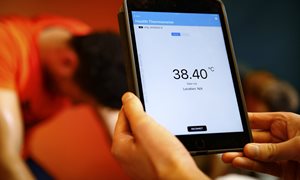
It has long been known that exercise reduces the risk of many chronic diseases. However, we do not yet know exactly how much exercise is necessary to achieve health benefits. Research conducted by Radboud university medical center among 150,000 people shows that the optimal amount of exercise differs per group.
How much exercise should you take in order to reduce the risk of death or serious cardiovascular disease, such as heart surgery, heart attack, angioplasty or stroke? Researchers studied data from 150,000 people from the northern provinces of the Netherlands, divided into three groups: healthy people, people who have an increased risk of cardiovascular disease (CVD) because they have high blood pressure or diabetes, for example, and finally people who are heart patients because they have had a heart attack or a stroke.
Lower the risk
The analysis showed that the same applies to people in the risk group and the healthy control group: more exercise leads to a lower risk of death or a new CVD, but at a certain point the additional benefit diminishes. They reach a ceiling, as it were. Esmée Bakker, of Radboud university medical center and principal investigator of this study: "The group of healthy and high-risk people reaches the point that more exercise no longer yields any extra health benefits. At some point you reach the maximum to reduce the risk of death or heart disease. But of course more exercise is never wrong. It is good for other health-related factors, such as your mental health and fitness. ." The study shows that people reach the ceiling when they do four to six times the Dutch physical activity guideline. That guideline advises people to be at least physically active on a moderate intensity for 2.5 hours a week. Bakker: "So the ceiling effect comes down to ten to fifteen hours of physical activity per week on a moderate intensity. The average Dutch person is well below that physical activity level. So there is a considerable gain to be made here."
This was different for the group of CVD patients. "We actually saw no maximum," says Bakker. For them, the more they exercise, the lower the risk of a new heart disease becomes. There is much debate in the scientific literature about the right advice for this group. "Because of our large research group, we make a substantial contribution to that discussion. Active lifestyle appears to be an important form of prevention. This group can really gain a lot from more physical activity."
Consequences of high-intensity work
The researchers also examined when people exercise: at work, in their spare time, in the household and in commuting. Here, strikingly enough, they found that people who do heavy intensive work and exercise a lot in the process do not have a reduced risk of heart disease or death. The health benefits are actually achieved with exercise in leisure time, such as sports, walking and cycling. Bakker: "We have no explanation for this, but we suspect that it is because this group does not exercise much outside of working hours. We want to investigate this further in the Nijmegen Exercise Study."
So that doesn't mean we can all go back to using the elevator at work? "No, certainly not," says Bakker. "This study only looked at the group that does heavy intensive work, think of pavers. We know from other research that people with sedentary jobs actually benefit from regular standing and exercise, so keep doing that!"
Two databases combined for this study
For this study, the researchers used the data from Lifelines, a database with information from more than 150,000 people in the north of the Netherlands. Esmée Bakker: "People who participate in Lifelines have been examined very extensively. They have also completed various questionnaires, including one on exercise. We linked this information to Statistics Netherlands (CBS). This allowed us to examine the relationship between physical activity and major cardiovascular diseases and mortality."
About the publication in PLOS Medicine
Dose-response association between moderate to vigorous physical activity and incident morbidity and mortality for individuals with a different cardiovascular health status: a prospective cohort study among 143,070 adults – Esmée A. Bakker, Duck-chul Lee, Maria T.E. Hopman, Eline J. Oymans, Paula M. Watson, Paul D. Thompson, Dick H.J. Thijssen, Thijs. M.H. Eijsvogels. DOI: 10.1371/journal.pmed.1003845.
-
Want to know more about these subjects? Click on the buttons below for more news.
More information
Pauline Dekhuijzen

wetenschaps- en persvoorlichter
Related news items

Grants for heart and kidney research Two awards to Radboudumc in Open Competition ENW-XS
21 July 2022Two researchers from the Radboudumc receive a grant from the NWO within the Open Competition of the Exact and Natural Sciences. They are Thijs Eijsvogels, who studies the heart, and Pieter Leermakers, who studies the kidneys.
go to page
Your heart rate as a thermometer Research Olympic athletes will be followed up during 4Daagse
18 July 2022Body temperature can be determined from heart rate. This is what research by the Radboudumc among Olympic athletes shows. Athletes can use this method during training to eventually perform better in the heat. The technique is now being further investigated among participants in the 4Daagse.
go to page
Exercise program appears to be a good alternative to surgery for chronic chest pain Reduced risk of other conditions, hospitalizations, and mortality
9 December 2021 Patients with chronic chest pain may benefit more from following an exercise program than from surgery in which doctors place a stent. Data from over 18,000 patients show a reduced risk of mortality, hospitalizations and other conditions. go to page
How are the Dutch Olympians prepared for the heat and humidity of Tokyo?
22 July 2021 Personal heat preparedness advice for Dutch Olympic athletes go to page

